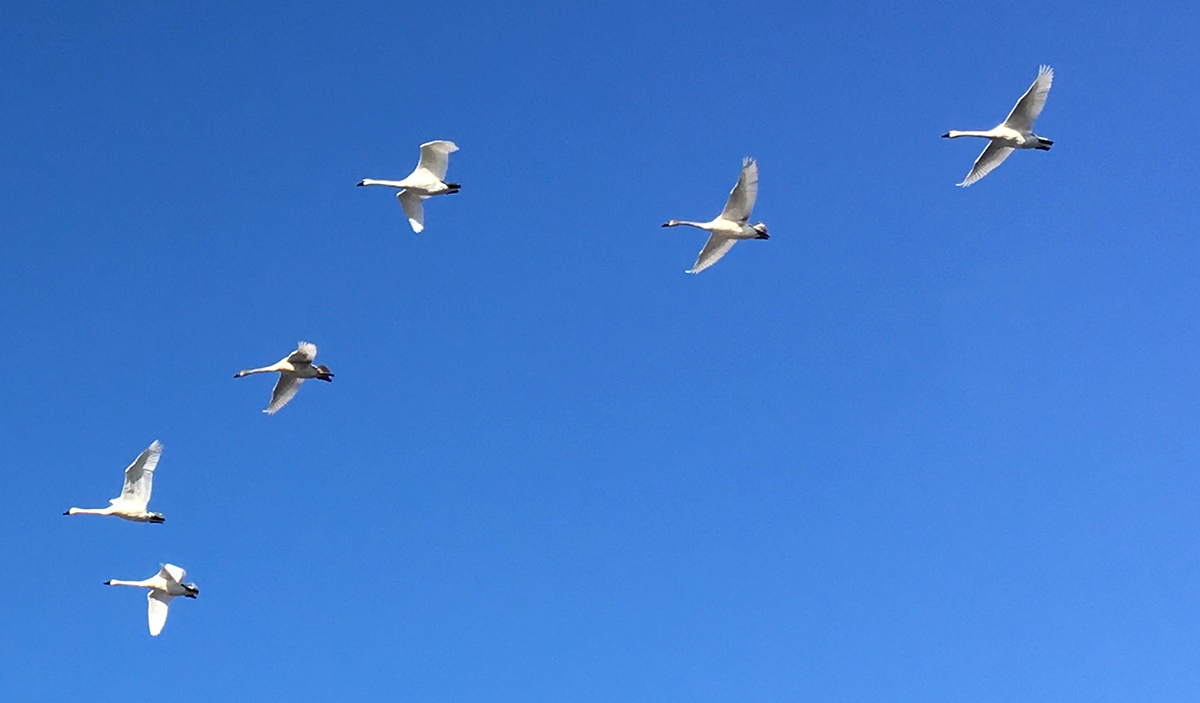Every year during the onset of the winter solstice, birders take up binoculars and head to the field to partake in the largest citizen science project in existence … The Christmas Bird Count. This year marks the 125th year of the count. I started taking part in the Christmas Bird Counts 35 years ago, and it is always an enlightening experience. Some years are clear, cold and crisp, some are blustery, snowy and challenging, and others are warm, wet and soggy. Such is winter in the Midwest. For some background on the history of the Christmas Bird Count, see my article in the February 2022 issue of The Community Word.
This year, birders in the Peoria count circle documented 75 different species of birds and 10,396 individual birds. The Peoria count took place on Saturday, Dec. 21, 2024. The 15-mile diameter count circle encompasses several different habitats including upland agricultural lands, river bottoms, wooded bluffs and of course all the residential, industrial, and urban lands that make up most of the cities of Peoria and East Peoria. Seven birding teams divide up the territory and spend the day both searching by car and on foot. Collectively, teams spent more than 66 team hours in the field, traveled 363 miles by car and walked 36 miles by foot. The top five species in numbers were Canada Goose (1,631), European Starling (1,514) American Crow (1,312), Mallard (1,141) and Ring-billed Gull (785). Some of the more unusual sightings we documented included Tundra Swans (11), which have only been observed in the Peoria circle on seven other count years, and Trumpeter Swans (17) which have only been seen here on three other count years.
These bird counts are critical for keeping our fingers on the pulse of the health of our planet. Experienced birders are needed to assist in counts in both winter and spring. To find out more about our central Illinois bird counts, and how to become involved, visit www.peoriaaudubon.org.
Beyond Bird Count
Beyond the science and statistics that are an important part of the bird counts, there is a psychological connection for the birder as well. Each count is an excuse to revisit both the physical destinations and the emotions of past counts. There is the thrill of finding a species you weren’t expecting to see, along with the joy of a stunning sunrise. These experiences make you realize that central Illinois is not a bad place to live. Birders across the world often relate back to some emotional connection that keeps them regularly picking up their binoculars and heading outdoors. We long for those times that we feel a “sense of place.”
In the January 2024 issue of The Community Word, I shared one such time when I felt that deep connection on a bird count. The article was about an ancient oak tree that was a sentinel along a rural Peoria County road. This tree was likely here before Europeans ever set foot in this part of the state. Countless years of migratory birds would have graced its branches in the ebb and flow of the seasons. Humans have changed the land dramatically, but the tree remained. A witness to the past when bison and prairie were common.
Sadly, this ancient tree is gone. Ravaged by the ages and the effects of roadside abuse, the tree was removed. In its place a striking emptiness exists. A void of what was. Sometimes the emotional connections we experience in nature are not positive ones. Sometimes they leave the soul with a feeling of loss. But nature has a way of healing those who are in tune with its medicine. It was at this spot that a flock of Trumpeter Swans flew over, as if to remind me that there were some things more ancient than the tree that once graced the skyline. Nature continues. The individual characters might come and go, but the process of migration, adaptation, and evolution continues. There is a bit of comfort in that fact.



Recent Comments